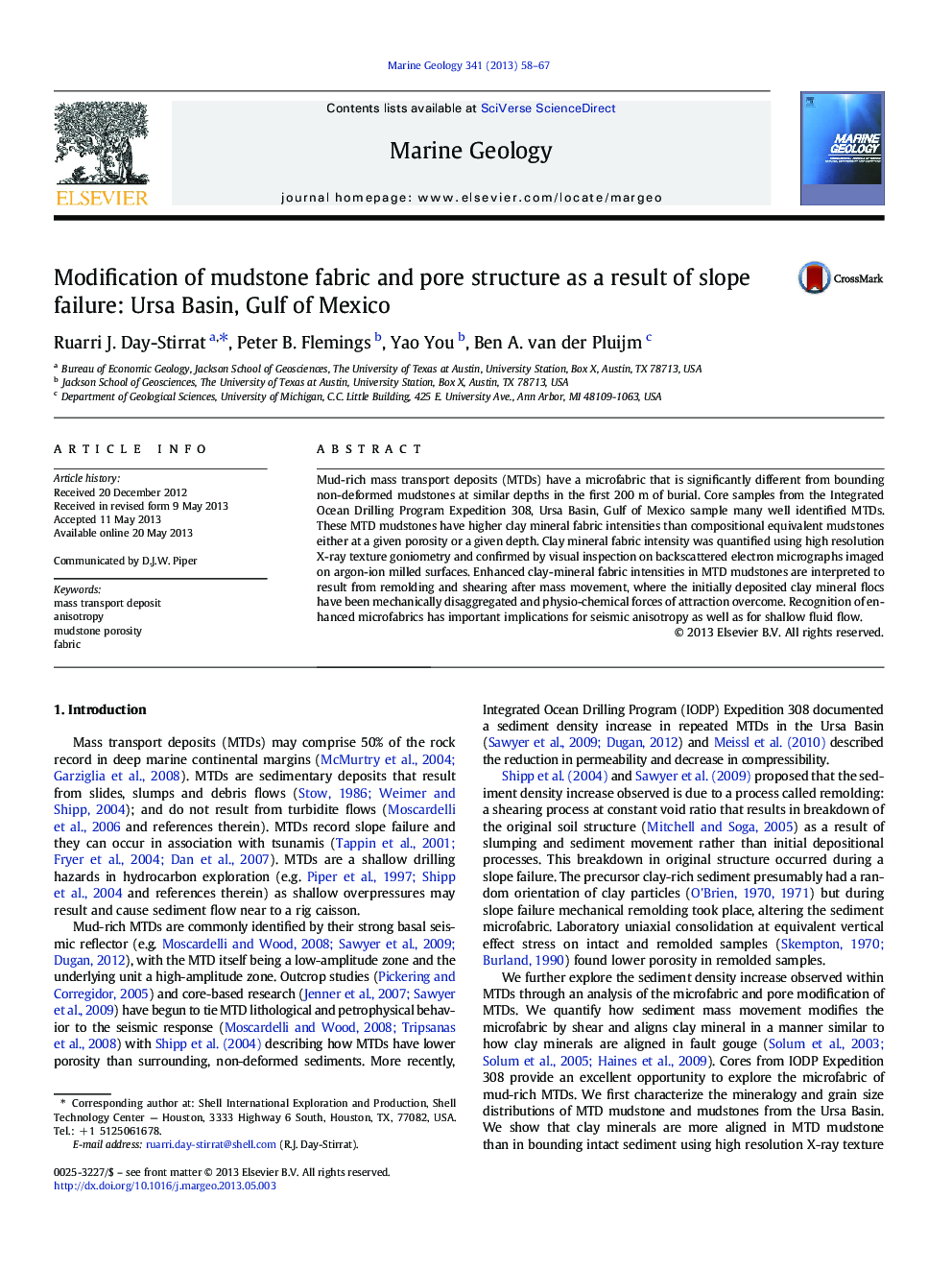| Article ID | Journal | Published Year | Pages | File Type |
|---|---|---|---|---|
| 4718339 | Marine Geology | 2013 | 10 Pages |
•We document increased preferred orientation of clay minerals in MTDs.•We examine changes in pore throat size distributions in MTDs.•We attribute MTD microfabric to be related to remolding at deposition.
Mud-rich mass transport deposits (MTDs) have a microfabric that is significantly different from bounding non-deformed mudstones at similar depths in the first 200 m of burial. Core samples from the Integrated Ocean Drilling Program Expedition 308, Ursa Basin, Gulf of Mexico sample many well identified MTDs. These MTD mudstones have higher clay mineral fabric intensities than compositional equivalent mudstones either at a given porosity or a given depth. Clay mineral fabric intensity was quantified using high resolution X-ray texture goniometry and confirmed by visual inspection on backscattered electron micrographs imaged on argon-ion milled surfaces. Enhanced clay-mineral fabric intensities in MTD mudstones are interpreted to result from remolding and shearing after mass movement, where the initially deposited clay mineral flocs have been mechanically disaggregated and physio-chemical forces of attraction overcome. Recognition of enhanced microfabrics has important implications for seismic anisotropy as well as for shallow fluid flow.
